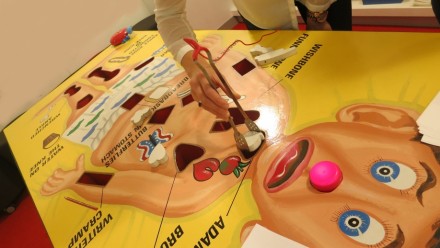Where do you feel?
Feeling the way to answers in Autism Spectrum Disorder (ASD)
Written by Elmie Janse van Rensburg, 28 April 2017
Where in your body do you feel anger? Do you experience anxiety in your stomach? Can your heart really ache with love?
The question of where you locate your emotions and senses is at the heart (pun intended) of the study of interoception.
Intero-what?
Interoception is the ability of an individual to pick up on internal sensations.
How well you can recognise things such as when you’re thirsty, over-heated, tired or stressed makes up your interoceptive ability, and is the focus of research being undertaken by PhD candidate Timothy Hatfield at the ANU Research School of Psychology.
“To make that understandable: everyone feels hungry. So that’s a piece of information which we get from our bodies that has sort of motivational and behavioural implications. We’re probably motivated to seek food and we go and eat food,” explains Hatfield.
“I’m interested in those types of sensations, but more broadly, also on the types of sensations that accompany emotions. “We get quite a lot of information from our bodies, and a lot of it is taken for granted. I think that we’re only just starting to realise in psychology how important this information is.”
How well we understand the signals our bodies are sending us is important not only for our own health and wellbeing, but also our ability to understand how others feel and respond to the world—in essence, our ability to empathise with others.
This makes the study of interoception particularly helpful in understanding Autism Spectrum Disorders, which are often characterised by atypical empathy and social difficulties. As you would expect, research has found that interoceptive abilities are different in ASD populations compared to people without ASD.
Not only is Hatfield’s study one of the very few to have even looked at differences in interoception among people with ASD, it is also employing a new methodology for doing so.
“We’ve created maps where individuals are presented with the silhouette of the human body and a stimulus word that represents an emotion or survival salient feeling state: hunger, thirst, anger or happiness,” Hatfield explains.
“Participants are asked to reflect on that experience and make clicks on the body and then once we get enough people to do it we can put all the information that we’ve got together and see where the majority of people are feeling sensations and also how distributed they are throughout the body.”
By comparing the click patterns, Hatfield and his team hope to determine where we feel certain emotions, and whether these patterns differ between groups.
In addition to improving our understanding of ASD, this interoceptive information could also contribute to our understanding of depression, anxiety and even mindfulness.
“Currently there’s no objective test for anxiety or depression. There’s no sort of biomarkers.
“But if there are ways in which people with these conditions are responding to their body, perhaps that’s something we could tap into and it could help with diagnosis, and tailoring treatments.”
So the next time someone asks you how you feel, get out your pen and paper and draw them a map.
If you or someone you know is an adult diagnosed with ASD, please consider taking part in Timothy Hatfield’s study to help psychologists understand more about it.










